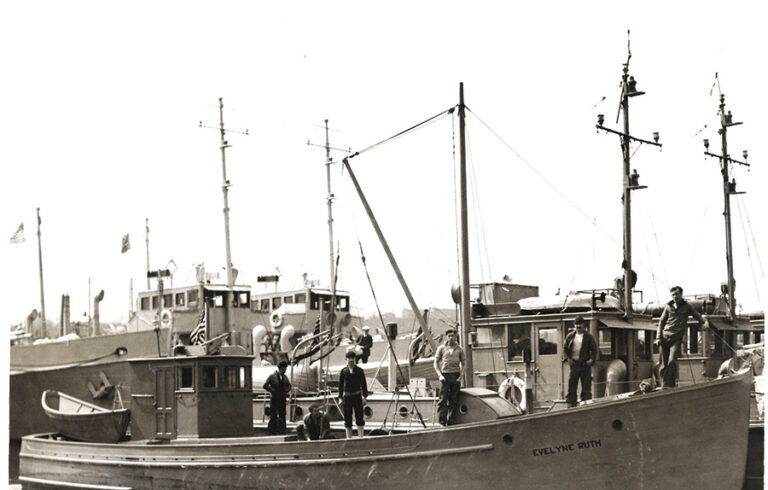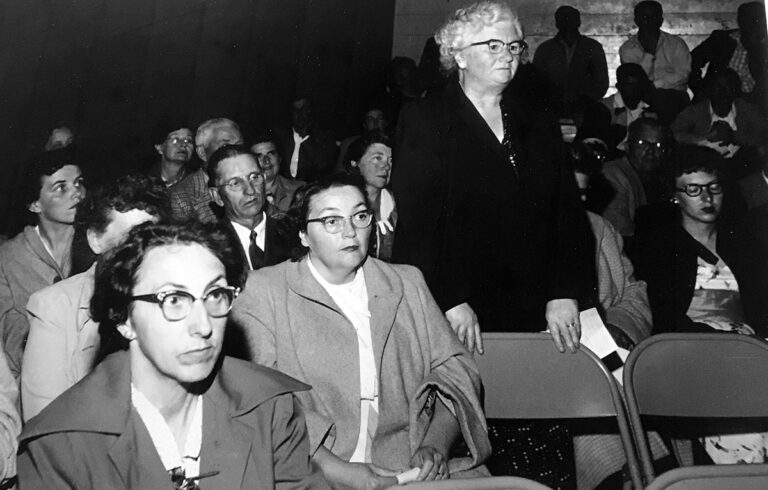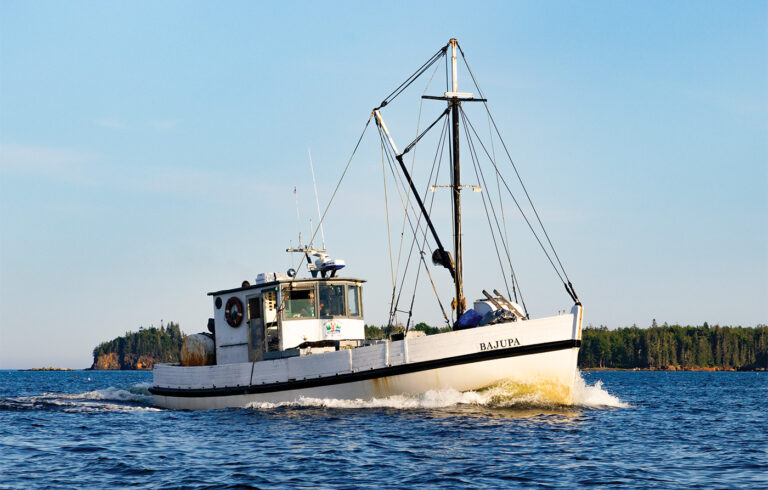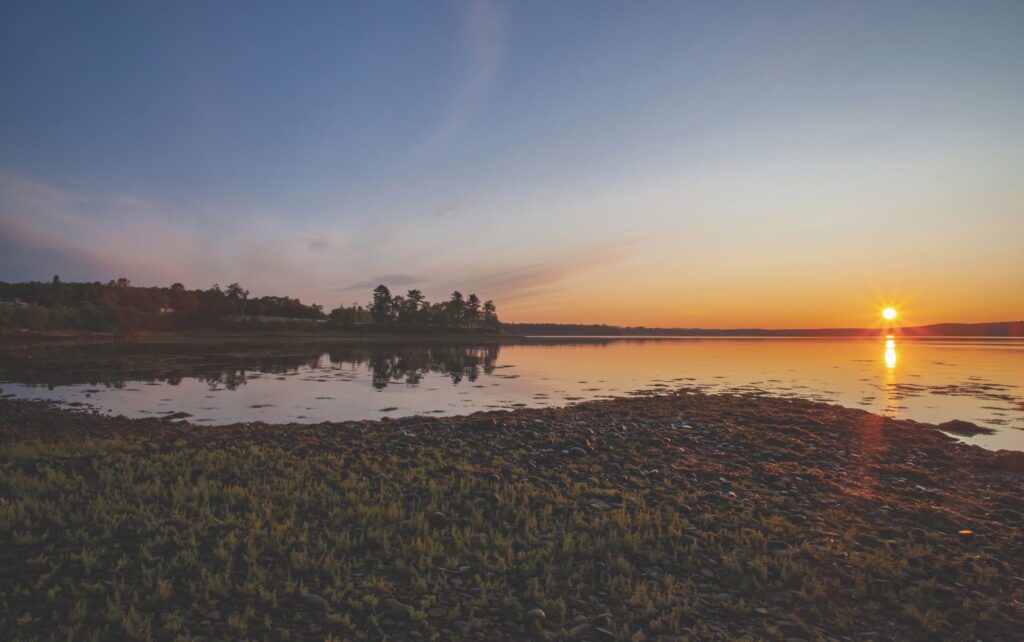
When Gluscabe was young, he watched his grandmother Woodchuck fish to feed the two of them, and saw she had a hard time catching fish. He decided to help her.
Gluscabe built a large fish weir across the entire mouth of the river, with a single opening in the middle. He went out into the bay and said to the fish, “The ocean is about to dry up. All you fish, swim up into my river and you will be safe!” The fish swam through the opening into the weir, and Gluscabe closed it.
Gluscabe went back to his grandmother Woodchuck, telling her they would never be hungry again. Grandmother Woodchuck came to see the weir full of all the fish in the sea, and told him he did wrong. Now there wouldn’t be any left for the descendants, she explained. “Put the fish back,” she said.
Gluscabe did. He opened the weir, telling the fish to swim free.
—The Wabanakis of Maine and the Maritimes, Maine Indian Publishing, 1989.
The above story is one told by the Wabanaki people of the region once known as the Dawnland, currently Maine and the Maritime provinces of Canada as far north as Newfoundland. Wabanaki refers to a confederacy of northeastern tribes.
For thousands of years, the Penobscot, Passamaquoddy, Micmac, and Maliseet people lived on the land and sea of the Dawnland, hunting, fishing, and gathering wild plants for food and medicine.
“It was our custom to follow the seasons and the migration of the animals and fish,” wrote Donald Soctoma, Passamaquoddy tribal historian, in the essay “Passamaquoddy History—A Brief Look Back.”
“In the winter we lived in the deep forest to hunt the large game animals, in the spring we gather at the first waterfalls of the river system to catch the large runs of salmon, in the summer we live along the coast to gather shellfish and fish in the deep ocean, and in the fall we follow the large game during the rut or mating season.”
The name Passamaquoddy is an Anglicized version of Peskotomuhkatyik, “the people that spear pollock.” The Passamaquoddy still live in the watershed of the St. Croix River of Eastern Maine and New Brunswick, Canada, but their ancestral land extended down to the Frenchman Bay islands.
Some traditional place names indicate what island areas were used for. The name for the sheltered village on the eastern shore of a large island in Frenchman Bay was Moneskatic, meaning clam digging place. This was named for the sandbar exposed with each low tide, the same feature Bar Harbor is named for today.
Sulessik, or seashell place, was the name for the island renamed Isle au Haut by the French explorer Samuel de Champlain in 1604. Shell middens throughout the islands provide archeological evidence that clams and oysters were plentiful, and a favored year-round food source.
Egg Rock off the shore of Bar Harbor was given the name Wawonok, which means eggs, according to Passamaquoddy artist and educator Geo Neptune. Such rocky islands were good for collecting eggs in the spring and hunting sea birds.
According to archeological record, seagulls, eider ducks, cormorants, and great auks were valuable food sources along the coast. Great auks, extinct since the 19th century, were flightless birds like penguins, but in the same family as puffins.
Fish weirs were constructed of willow rods in rivers and in tidal areas to catch schooling and spawning fish. Stone fishhooks like the ones on display at the Abbe Museum in Bar Harbor were attached to Indian hemp or basswood bark fish line to catch small fish, and large fish were harpooned from canoes.
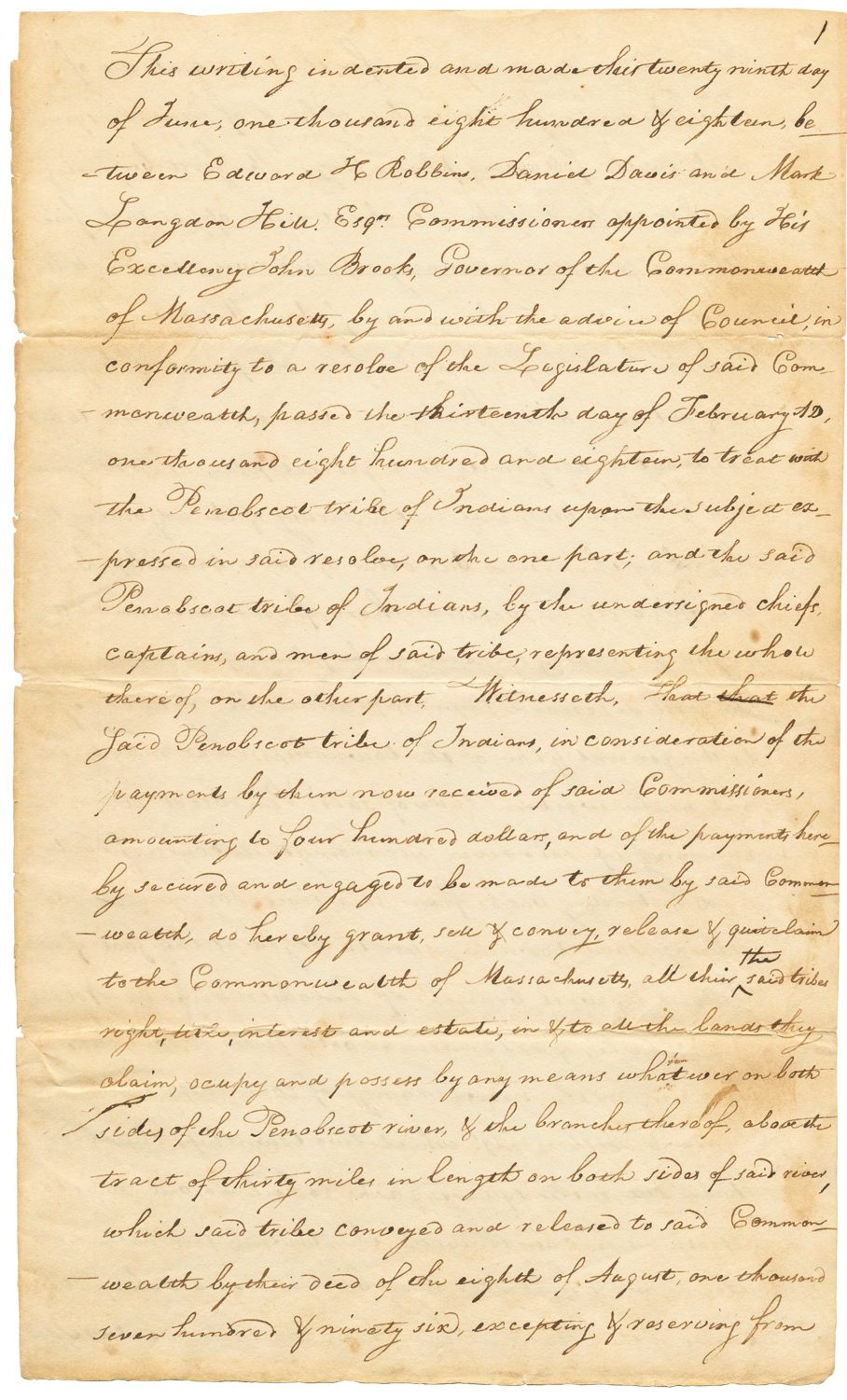
When Maine became a state, it adopted the 1818 treaty between the state of Massachusetts and the Penobscot Nation. The only alteration to the document was the substitution of “Massachusetts” for “Maine.”
Seals and porpoises were also hunted by canoe, providing meat and valuable fat that could be boiled down into oil. The skins of these and all mammals hunted were scraped and boiled down into leather for clothing.
The coast had so much food in the summer that large summer villages formed. One such village was Astuwiku, the meeting place, on present day Mount Desert Island near Northeast Harbor.
Early French explorers encountered a chief named Asticou, the most famous chief in early historical record. But Neptune suggested in a 2018 article “Naming the Dawnland” that Asticou was the name of the place, mistaken for the name of the person.
With the coming of the French and the English and their battles to claim the “new” world that had been occupied since the last ice age, warfare and new disease such as smallpox disrupted traditional ways of life and decimated the Wabanaki population.
According to Harald Prins and Bunny McBride’s 2015 book Asticou’s Island Domain, a two-volume ethnographic overview and assessment for Acadia National Park, “90 percent of the Wabanaki perished in this American Indian holocaust,” which left the land and offshore islands “largely cleared for European settlement.”
Soctoma wrote that an 1812 census counted 360 people in the Passamaquoddy tribe, which “had been reduced by war and disease to a fraction of its former size.”
As detailed in Prins and McBride’s study, Wabanaki people continued to travel with the seasons as much as they could without trespassing on newly settled farms, and petitioned the government for tracts of their ancestral lands for their exclusive use, which became reservations.
Trading and selling products to settlers, and later to tourists on the coast, became a new way for Wabanaki families to support themselves. As Neptune explained, “Wabanaki encampments continued to make their appearance, and their locations were still chosen based on proximity to resources, but it was the resources themselves that experienced the biggest change.
“While Wabanaki people traditionally harvested food from the island, the arrival of Euro-Americans eventually created the need to survive in a currency-based economy, and Wabanaki culture adapted.”
Bar Harbor became known for its Indian encampments from the 1860s through the 1890s, in which Wabanaki families would camp through the summer selling ash, birch bark, and porcupine quill baskets, and guiding popular canoe excursions around the harbor.
Fishing, clamming, gathering sweetgrass from coastal marshes and making and selling baskets are continued by many Wabanaki people today. Conserving waterways and protecting fish stock for future generations, as young Gluscabe learned to do, is still a primary way of life for the people of the Dawnland.
Rebecca Pritchard lives in Bar Harbor. A reporter and former park ranger, she enjoys teaching and writing about Maine history. Her book Jeremiah Hacker: Journalist, Anarchist, Abolitionist is available in local bookstores.

